
Umber is a naturally occurring brown earth pigment used in art and painting for centuries. This versatile pigment is derived from various types of clay and has a range of colors, from yellowish-brown to dark brown. This article will explore umber’s history, properties, and uses.
Table of Contents
Umber is a type of natural earth pigment used since ancient times. It is composed of iron oxide and manganese oxide, among other minerals, and it is found in various deposits worldwide. Umber has been used in art, cosmetics, and building materials, among other applications.
Origin and History
Brown earth has been known since prehistoric times and was mentioned in the earliest painting treatises. However, the name umber did not appear until the 16th century. Sixteenth-century Italian painting treatises used the term terra d’ombra, translated as umber for a type of brown earth. The name is likely derived from ombra, Italian for “shadow,” because the pigment was useful for dark or shadow areas. Writers of the 17th century mentioned calcining umber before use, and the term burnt umber entered literature around this time. The term raw umber was not commonly used in English treatises before the 19th century. The name umber was frequently used for organic brown pigments in the 18th and 19th centuries, while brown iron oxides were called brown ocher. Today, the name is most often associated with brown earth composed primarily of iron and manganese oxides. In the 17th century, Turquet de Mayerne made the first association of umber with manganese containing iron oxide pigments by describing umber’s drying properties and the fact that the color became brown-red by burning.
Historically, European sources of brown earth (goethite) were mined throughout many regions of Europe. The dark brown umbers, containing 45% to 70% iron oxide and 5% to 20% manganese dioxide, were originally extracted from northern Italy but are now mined primarily in Cyprus. Other sources of umber were found in England, France, Germany, and later in the United States.
During the medieval period, using dark brown pigments was relatively uncommon in art. Instead, artists tended to prefer bright, vivid colors such as red, blue, and green. It was not until the late fifteenth century that the use of umbers began to gain popularity in Europe. Giorgio Vasari, a renowned Renaissance painter and writer noted that they were a relatively new addition to artists’ palettes during his lifetime.
The Baroque period marked a significant era for using umber pigments in art, where it frequently provided depth and darkness in the chiaroscuro painting style. Caravaggio and Rembrandt, two prominent artists of the time, incorporated umber into their works, utilizing its unique properties. Rembrandt, in particular, incorporated it into his complex brown hues and took advantage of its quick-drying capabilities to expedite his creative process. Additionally, Johannes Vermeer utilized umber to create warm, harmonious shadows on whitewashed walls.
In the latter half of the 19th century, the Impressionist movement rebelled against using traditional earth colors such as umber. Camille Pissarro, an Impressionist artist, even went as far as to denounce “old, dull earth colors” and removed them from his palette. Instead, Impressionist artists created their hues of brown by mixing various pigments, such as red, yellow, green, and blue, including synthetic pigments like cobalt blue and emerald green.
In the 20th century, natural umber pigments were gradually replaced by synthetic pigments made from iron oxide and manganese oxide. Although natural umber pigments are still produced, Cyprus remains the most prominent source of these pigments. Pigments containing natural earth are typically labeled as PBr7 or Brown pigment 7.

The Italian baroque painter Caravaggio used umber to create dark areas in the chiaroscuro (“light-dark”) painting style.
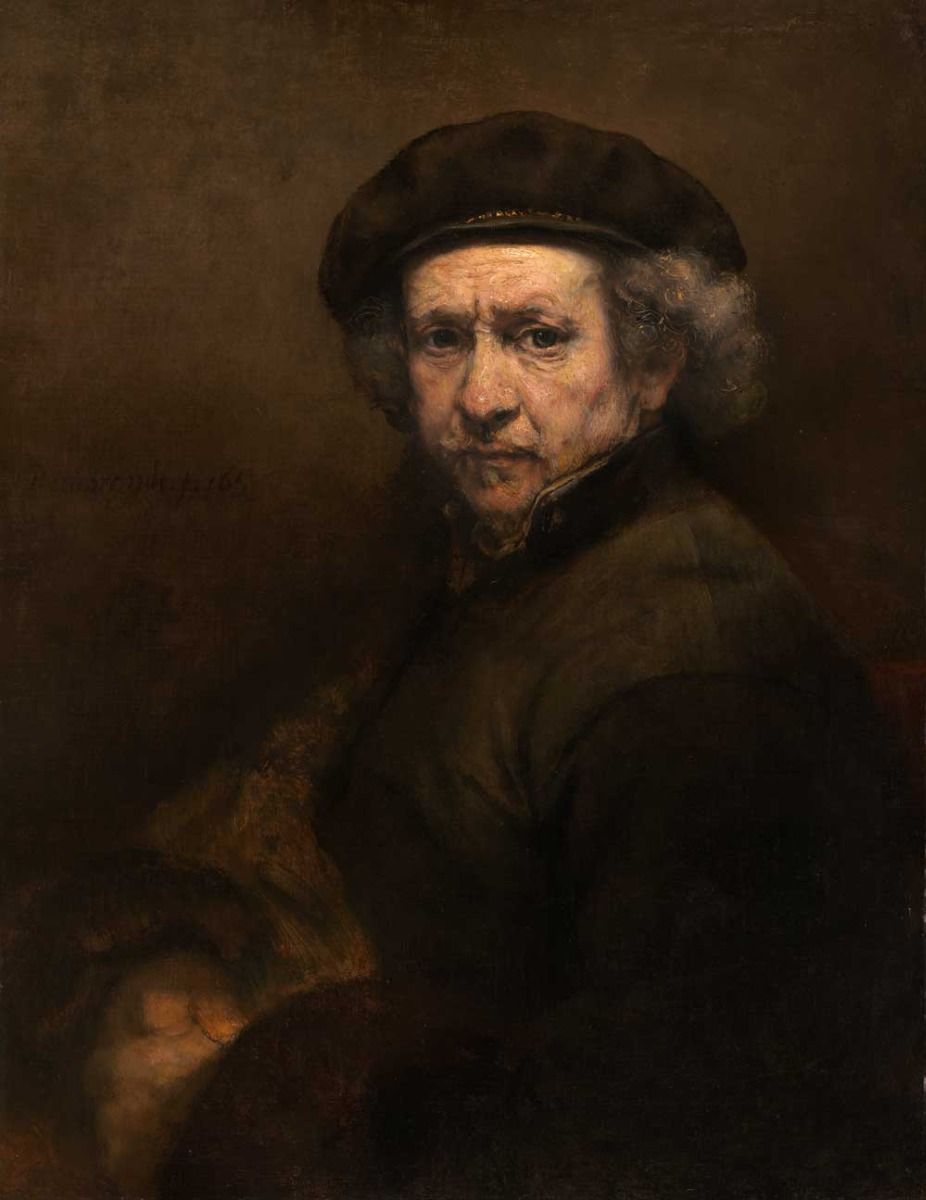
Self portrait by Rembrandt van Rijn (1659). Rembrandt used umbers to create rich and complex browns in ground layers and to speed the drying of his paintings.
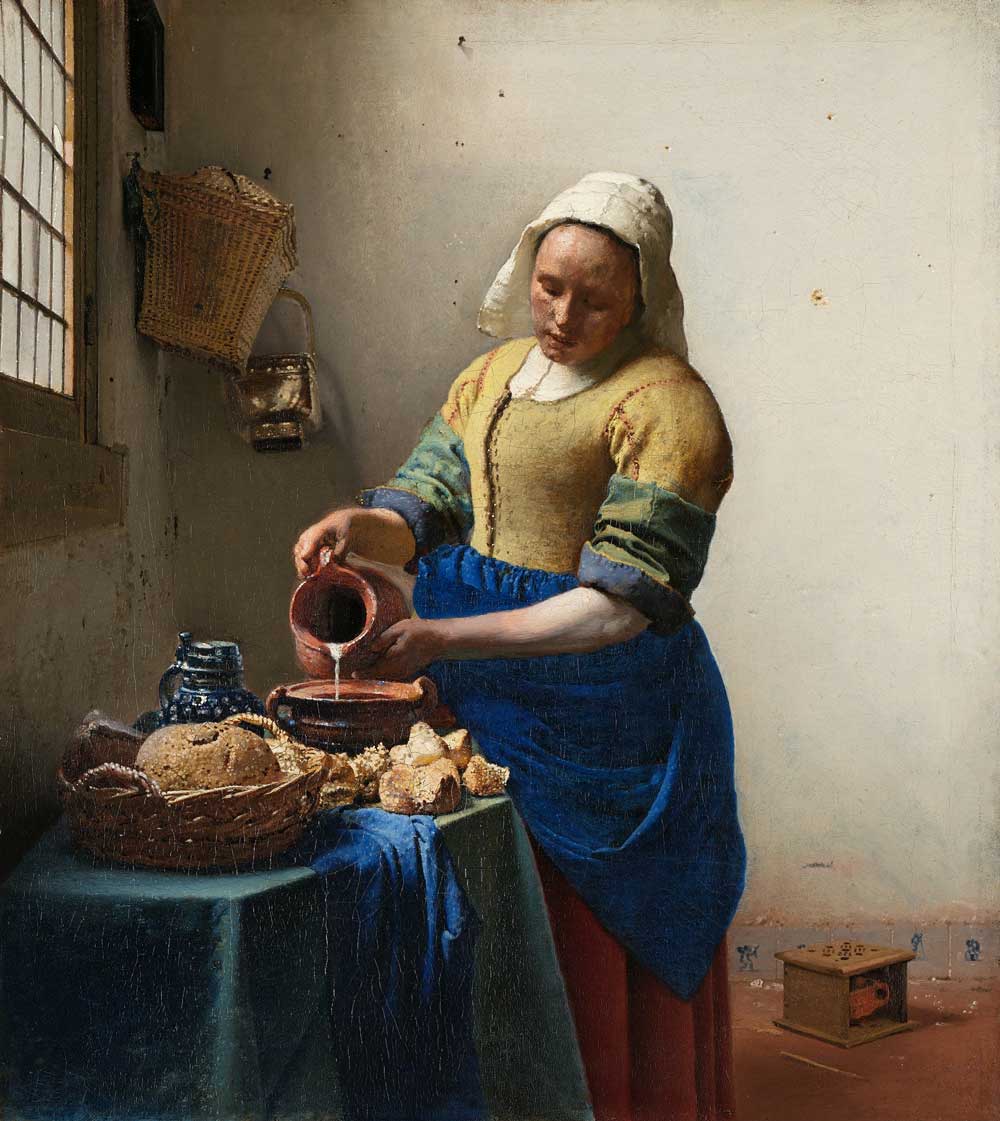
The Milkmaid, by Johannes Vermeer (1657–1658). Vermeer used umber for the shadows on walls because they were warmer than those made with black.
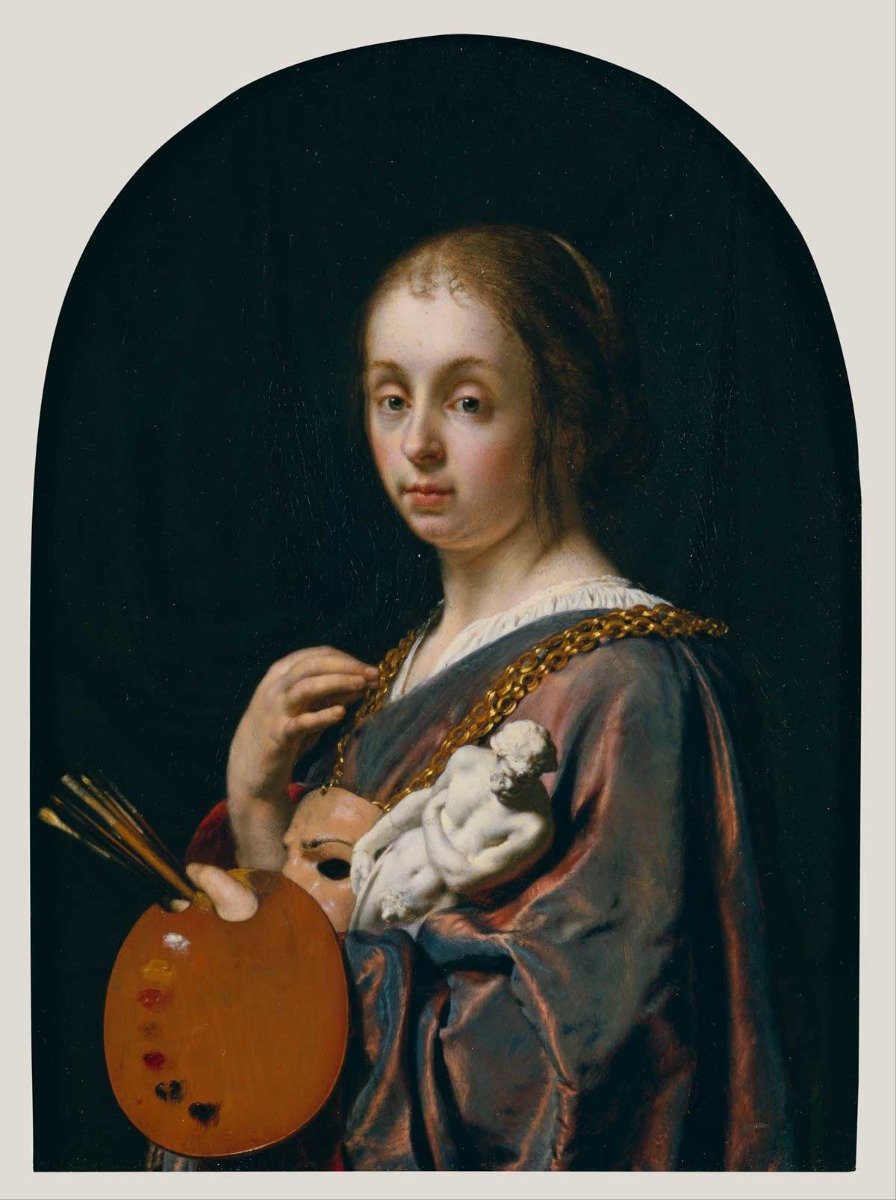
Frans van Mieris the Elder (1635–1681), Pictura (An Allegory of Painting), 1661, Oil on copper, 127 mm x 89 mm (5.0 in. x 3.50 in), Getty Center.
In a painting by Vermeer’s contemporary Frans van Mieris, the allegorical figure representing Pictura can be seen holding a typical palette. Van Mieris’ represented the typical 17th-century palette for painting flesh tones. The pigments commonly were laid out from light to dark. From top to bottom, one can clearly distinguish white lead, the principle component of the lighter flesh tones, then yellow ocher, vermilion, madder lake, green earth, umber, and carbon black.
The representation of the flesh palette, which frequently appeared in paintings of this period, had a special significance. Willem Beur, a Dutch painter and author of a manual for painters, wrote:” Just as we humans consider ourselves the foremost amongst animals; so too, are we the foremost subject of the art of paintings, and it is in painting human flesh that its highest achievement are to be seen, whenever a painter succeeds in rendering the diversity of colors and string hues found in human flesh and particularly in the faces, adequately depicting the intricacy of the diversity of people or their different emotions.”
Properties of Umber
Umber is a yellowish-brown to greenish-brown mineral pigment used in tempera, oil, and watercolor, obtained from natural earth colored by iron and manganese oxides. Just as with sienna, the chemical composition of umber is closely related to its iron oxide content. What makes umber different is the increased content of manganese. Other substances naturally occurring in umber, including clay, talc, and calcium carbonate, do not affect its color significantly. Umbers with the highest tinting strength are those with the highest iron and manganese content. Some of the finest umbers come from Cyprus and may contain up to 16% manganese oxide. German umber typically contains 1–2% manganese, English umber 7%, and umber from Russia and Ukraine about 4% manganese.
Raw or Natural Umber
Raw or natural umber is the type of naturally occurring goethite or iron oxide hydroxide as the primary colorant and manganese oxide as the secondary colorant.
Burnt Umber
Burnt umber is a reddish brown pigment made by heating raw umber, dehydrating the iron oxides, and partially changing it to the more reddish hematite. Some types of burnt umber are naturally found with a high percentage of hematite and hence are not calcined or heated. It is used for both oil and watercolor paint. The first recorded use of burnt umber as a color name in English was in 1650.
Chemical Composition of Umbers
Iron oxide earth pigments are an important group of inorganic pigments derived from natural minerals. Iron oxide pigments are yellow, red, and brown, but artists know them as ochre, sienna, red oxide, and umber. Unlike manufactured pigments, the color of natural iron oxide pigments varies with the composition of the particular segment of earth from which they come. The color of these pigments is derived from three constituents: the principal coloring ingredient, secondary coloring ingredients, and a base. The combination of these ingredients produces the particular color of the earth. The innumerable forms and variations in which these ingredients can combine result in a wide range of possible yellows, reds, and browns.
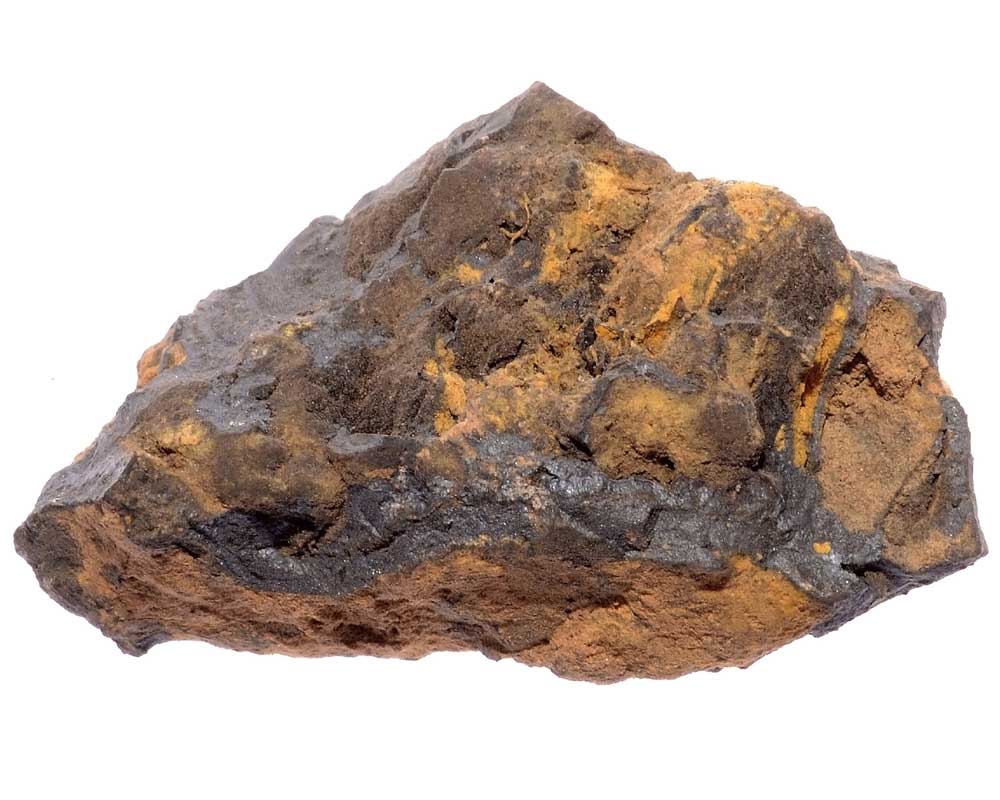
Goethite, or hydrated iron oxide, is the basic colorant of the earth pigments ochre, sienna, and umber.
Principal Colorant
Iron oxide is the principal color-producing ingredient in the earth. The properties of the particular iron oxide in the earth determine its color. Typically, the primary iron oxide mineral in umber is goethite or a mixture of iron oxide minerals known as limonite. The nature of the iron oxide found in the deposit, rather than its percentage, is critical to the resulting earth color. Most rock contains some iron oxide. Those bearing the least amounts are limestone, white clay, and colorless kaolin. Those containing the highest amounts are the rocks from which metallic iron is extracted.
Pyrolusite—a manganese oxide ore. The presence of a large amount of manganese oxide, which is black, makes umber earth colors darker than ochre or sienna.
Secondary Colorant
Calcite (calcium carbonate), pyrolusite (manganese oxide), and quartz (silica) are some common accessory minerals that affect the specific color of natural iron oxides. Manganese oxide, for example, enriches the brown in numbers. The presence of manganese distinguishes umbers from brown ochers that are darkened by the presence of other minerals, such as magnetite.
The umber and ocher beds of Cyprus are among the most exciting mineral resources of the island. Ancient slags have been found to contain considerable amounts of manganese, but whether the Phoenicians and Romans used umber, which was easily accessible, as a flux in smelting their pyrites for copper, is unknown. The umber beds occur on the contact line of the pillow lavas with the overlying mark and sedimentaries. Geological study shows that the natural deposits of the umber must be enormous and are, for the most part, untapped. At Larnaca, the ore is exported as raw umber in lumps and as burnt umber in powder and may be graded into 25 shades. The color of the natural umber varies from yellowish-brown to dark sepia, according to the manganese content, which has been found to range up to 16%. Manganese salts are readily leached out of rocks by percolating water so that the manganese content of any particular specimen appears to vary according to whether its position in the umber bed is above or below the geological water table.
Base
Nearly all iron oxides have a clay base. Clay is the weathered product of silicate rocks and is extremely varied in composition. As a result, it has numerous effects on the earth’s color.
Physical Properties
Umber has a fine texture and a powdery consistency, making it easy to mix with other materials. It is a non-toxic pigment resistant to fading and weathering, making it suitable for outdoor use.
Generally, paint films containing earth pigments are extremely flexible, weak, and sensitive to moisture. The clay content in earth-based oil paint films is the reason for their ability to absorb water and undergo swelling, even with moderate changes in relative humidity. Paint films containing umbers with linseed and safflower oil significantly expand in response to high relative humidity levels (between 75% and 90% RH). Under these conditions, umbers are flexible, elongated, and have low tensile strength.
Umbers typically dry fast in oil paint due to manganese oxide. Manganese is a primary drier; therefore, umbers have a siccative effect on oil paint films. During oxidation, manganese oxide exerts through-drying properties, which promote surface drying in the curing of oil paints. During hydrolysis of oil paint, free fatty acids are released and migrate in the oil, reacting with metal ions in the pigment and forming metal soaps. The greater the amount of manganese oxide present, the higher percentages of manganese ions dissociate from these oxides and dissolve in the oil, accelerating its drying. Finally, an increase in the amount of manganese ions results in increased stiffness of the paint film. The intrinsic characteristics of umbers and their interactions with the binding media govern paints’ performance and stability in mid-to-long terms, also responsible for paints’ specific aging and vulnerability.
Paints containing earths, such as umber, ochre, and sienna, tend to hydrolyze in a very short time. While it is not clear why this degradation of the oil takes place more easily in the presence of such pigments, it is likely related to the hygroscopicity of the clay and silicates they contain and their ability to absorb moisture.
Color Variations
Umber is not one precise color but a range of colors, from medium to dark in value and from greenish to reddish in hue. The color of the natural earth depends primarily upon the proportions of iron oxide and manganese in the clay. Umber earth pigments contain between five and twenty percent manganese oxide, which accounts for their darker and less saturated color than the related earth pigment, sienna. Commercial umber pigments vary in color depending on their origin and how they are processed. Not all pigments marketed as “umber” contain natural earths; some contain synthetic iron and manganese oxides. The Colour Index Generic Name, PBr7 (Pigment Brown 7), typically identifies pigments containing natural brown earth-like umber.
The Uses of Umber
Art and Painting
Umber has been a popular pigment in art and painting for centuries. It is used to create earthy, natural tones in paintings and can be mixed with other colors to create a range of shades. It is also used to create underpaintings and to add depth and richness to a painting.
Cosmetics
Umber has been used in cosmetics for centuries, particularly in powders and eyeshadows. It is valued for its natural earth tones and ability to blend well with other pigments.
Building and Construction
Umber has been used in building materials, such as bricks and mortar, for its natural coloring. It can also be used as a natural pigment in stucco and plaster finishes.
Umber was used in 19th and early 20th-century industrial and house paints to create a wide range of earth tones. For instance, the different shades of fawn were mixtures of raw or burnt umber and strong-colored dark ochres in various proportions. Bronze brown was a mixture of raw umber and chrome yellow that was toned with Cassel brown, chrome orange, black pigments, green mineral colors, and iron oxide. The various terra cotta shades are obtained by mixing burnt umber and red iron oxide pigments with chalk, barite, lithopone, and zinc white in different proportions. Some olive greens were mixtures of raw umber with green lake pigments, shaded using red or yellow lakes. Raw and burnt umber also play a role in manufacturing olive green oil colors.
Production of Umber
Umber is sourced from various deposits worldwide, including Italy, Cyprus, and Russia. The pigment is extracted from clay and processed to remove impurities and refine the color. The pigment can also be heated to produce a reddish-brown hue.
Environmental Impact of Umber
Umber is a natural pigment that is non-toxic and does not have a significant environmental impact. However, the production of umber can have environmental concerns, mainly if the extraction process is not carried out sustainably. If the clay deposits are not properly managed, they can lead to soil erosion, habitat destruction, and water pollution. Ensuring that umber is sourced from sustainable and ethical sources is essential to minimize its environmental impact.
Frequently Asked Questions
Is umber a toxic pigment?
Umber is a non-toxic pigment that is safe to use in art, cosmetics, and building materials.
What colors can umber produce?
Umber can produce a range of colors, from yellowish-brown to dark brown. It can also be heated to produce a reddish-brown hue.
Where is umber sourced from?
Umber is sourced from various deposits around the world, including Italy, Cyprus, and Russia.
How is umber processed?
Umber is extracted from clay and then processed to remove impurities and refine the color. It can also be heated to produce a reddish-brown hue, which is known as "burnt umber."
What are the environmental concerns associated with umber?
While umber is a non-toxic pigment that does not have a significant environmental impact, it is important to ensure that it is sourced sustainably and ethically to minimize its impact on the environment.
References
“Cyprus.” Annual Report of the Government Analyst for the Year 1935. Campden Annual Report, 1934–1935. p. 697.
Eastaugh, Nicholas, Valentine Walsh, Tracey Chaplin, and Ruth Siddall. Pigment Compendium: A Dictionary of Historical Pigments. Oxford: Elsevier Butterworth-Heinemann, 2004.
Laura Fuster-López, Francesca Caterina Izzo, Marco Piovesan, Dolores J. Yusá-Marco, Laura Sperni, Elisabetta Zendri. (2016). Study of the chemical composition and the mechanical behaviour of 20th-century commercial artists' oil paints containing manganese-based pigments. Microchemical Journal, Volume 124, 2016. pp. 962-973. ISSN 0026-265X. https://doi.org/10.1016/j.microc.2015.08.023.
Gettens, R.J., & Stout, G.L. (1966). Painting Materials: A Short Encyclopedia. New York: Dover Publications.
Grovier, Kelly. “Umber: The colour of debauchery.” Art in Colours | Art History. Culture. BBC. September 19, 2018. Retrieved from https://www.bbc.com/culture/article/20180919-umber-the-colour-of-debauchery
Kirby, J. (2018). Earth Pigments. In J. Kirby (Ed.), Pigment Compendium: A Dictionary of Historical Pigments (2nd ed., pp. 115-130). London: Routledge.
Kurlander, E. (2018). The History of Umber. In J. Kirby (Ed.), Pigment Compendium: A Dictionary of Historical Pigments (2nd ed., pp. 484-488). London: Routledge.
Maerz, Paul. (1930). A Dictionary of Color. New York:1930 McGraw-Hill. p. 191; Color Sample of Burnt Umber: p. 53 Plate 15 Color Sample A12.
Roelofs, Isabelle; Petillion, Fabien (2012). La couleur expliquée aux artistes. Editions Eyrolles. ISBN 978-2-212-13486-5.
Szabo, L. (2017). Earth Pigments and Paint of the California Indians: Meaning and Technology. In S. M. Cole & C. A. Fowler (Eds.), Cultural Transmission and Material Culture: Breaking Down Boundaries (pp. 77-95). Tucson: University of Arizona Press.
Thompson, Daniel V. (1956). The Materials and Techniques of Medieval Painting. Mineola, NY Dover Publications, 1956, pp. 88–89.
Zerr, George, and Rübencamp, R. (1908). A Treatise on Colour Manufacture. Dr. Charles Mayer, Editor. Lond: Charles Girffith and Co., Ltd. 1908. pp. 255, 397–400.
Color Notes: Raw Umbers Part One
Pigments in Part One
Luberon Raw Umber Pigment
| Pigment Names | |||
| Common Names: | English: umber French: terre d'ombre German: Umbererde Italian: terra d'ombra Russian: умбра Spanish: tierra de sombra |
||
| Alternate Names: | English: raw umber, natural umber, unburnt umber French: ombre naturelle |
||
| Nomenclature: |
|
||
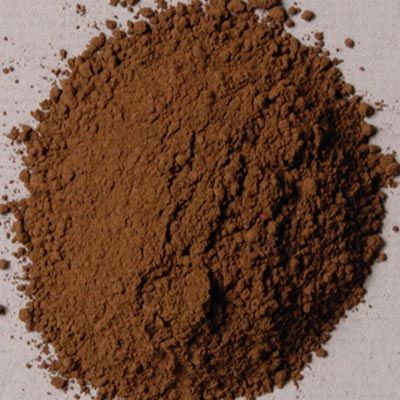
Rublev Colours Pigment: Luberon Raw Umber
| Pigment Information | |
| Color: | Brown |
| Colour Index: | Pigment Brown 7 (77491) (77492) (77499) |
| Chemical Name: | Iron oxide-hydroxide and manganese oxide |
| Chemical Formula: | α-FeOOH·MnO2 |
| ASTM Lightfastness Rating | |
| Acrylic: | I |
| Oil: | I |
| Watercolor: | I |
| Properties | |
| Density: | 3.3–4.3 |
| Hardness: | 5.0–5.5 |
| Refractive Index: | nα=2.260 nβ=2.393 nγ=2.398 |
Italian Green Raw Umber Pigment
| Pigment Names | |||
| Common Names: | English: umber French: terre d'ombre German: Umbererde Italian: terra d'ombra Russian: умбра Spanish: tierra de sombra |
||
| Alternate Names: | English: raw umber, natural umber, unburnt umber French: ombre naturelle |
||
| Nomenclature: |
|
||
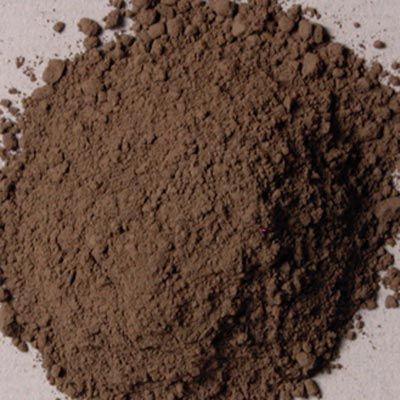
Rublev Colours Pigment: Italian Green Raw Umber
| Pigment Information | |
| Color: | Brown |
| Colour Index: | Pigment Brown 7 (77491) (77492) (77499) |
| Chemical Name: | Iron oxide-hydroxide and manganese oxide |
| Chemical Formula: | α-FeOOH·MnO2 |
| ASTM Lightfastness Rating | |
| Acrylic: | I |
| Oil: | I |
| Watercolor: | I |
| Properties | |
| Density: | 3.5 |
| Hardness: | 5.0–5.5 |
| Refractive Index: | nα=2.260 nβ=2.393 nγ=2.398 |
French Raw Umber Oil Paint


French Raw Umber Oil Paint
| French Raw Umber | |
| Color: | Brown |
| Binder: | Linseed oil |
| Additive(s): | None |
| Pigment Information | |
| Pigment: | Raw Umber |
| Pigment Classification: | Natural inorganic |
| Colour Index: | Pigment Brown 7 (77491) (77492) (77499) |
| Chemical Name: | Iron oxide-hydroxide and manganese oxide |
| Chemical Formula: | α-FeOOH·MnO2 |
| Properties | |
| Code: | 610 |
| Series: | 1 |
| Opacity: | Semi-Opaque |
| Tinting Strength: | Medium |
| Drying Rate: | Fast |
| ASTM Lightfastness: | I |
| Permanence: | A |
| Safety Information: | No acute or known chronic health hazards are associated with this product's anticipated use (most chemicals are not thoroughly tested for chronic toxicity). Always protect yourself against potentially unknown chronic hazards of this and other chemical products by keeping them out of your body. Do this by avoiding ingestion, excessive skin contact, and inhaling spraying mists, sanding dust, and vapors from heating. Conforms to ASTM D-4236 |
For a detailed explanation of the terms in the table above, please visit Composition and Permanence.
Italian Green Raw Umber Oil Paint


Italian Green Umber Oil Paint
| Italian Green Umber | |
| Color: | Brown |
| Binder: | Linseed oil |
| Additive(s): | None |
| Pigment Information | |
| Pigment: | Raw Umber |
| Pigment Classification: | Natural inorganic |
| Colour Index: | Pigment Brown 7 (77491) (77492) (77499) |
| Chemical Name: | Iron oxide-hydroxide and manganese oxide |
| Chemical Formula: | α-FeOOH·MnO2 |
| Properties | |
| Code: | 619 |
| Series: | 1 |
| Opacity: | Semi-Opaque |
| Tinting Strength: | Medium |
| Drying Rate: | Fast |
| ASTM Lightfastness: | I |
| Permanence: | A |
| Safety Information: | No acute or known chronic health hazards are associated with this product's anticipated use (most chemicals are not thoroughly tested for chronic toxicity). Always protect yourself against potentially unknown chronic hazards of this and other chemical products by keeping them out of your body. Do this by avoiding ingestion, excessive skin contact, and inhaling spraying mists, sanding dust, and vapors from heating. Conforms to ASTM D-4236 |
For a detailed explanation of the terms in the table above, please visit Composition and Permanence.
Color Notes: Raw Umbers Part Two
Pigments in Part Two
Cyprus Raw Umber Light Pigment
| Pigment Names | |||
| Common Names: | English: umber French: terre d'ombre German: Umbererde Italian: terra d'ombra Russian: умбра Spanish: tierra de sombra |
||
| Alternate Names: | English: raw umber, natural umber, unburnt umber French: ombre naturelle |
||
| Nomenclature: |
|
||
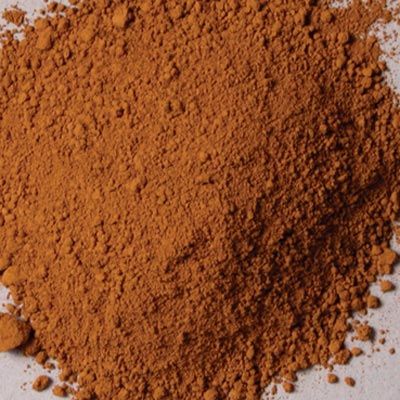
Rublev Colours Pigment: Cyprus Raw Umber Light
| Pigment Information | |
| Color: | Brown |
| Colour Index: | Pigment Brown 7 (77491) (77492) (77499) |
| Chemical Name: | Iron oxide-hydroxide and manganese oxide |
| Chemical Formula: | α-FeOOH·MnO2 |
| ASTM Lightfastness Rating | |
| Acrylic: | I |
| Oil: | I |
| Watercolor: | I |
| Properties | |
| Density: | 3.3–4.3 |
| Hardness: | 5.0–5.5 |
| Refractive Index: | nα=2.260 nβ=2.393 nγ=2.398 |
Cyprus Raw Umber Light Oil Paint


Cyprus Raw Umber Light Oil Paint
| Cyprus Raw Umber Light | |
| Color: | Brown |
| Binder: | Linseed oil |
| Additive(s): | None |
| Pigment Information | |
| Pigment: | Raw Umber |
| Pigment Classification: | Natural inorganic |
| Colour Index: | Pigment Brown 7 (77491) (77492) (77499) |
| Chemical Name: | Iron-manganese oxide |
| Chemical Formulaα-FeOOH | α-FeOOH·MnO2 |
| CAS No. | |
| Properties | |
| Code: | 613 |
| Series: | 1 |
| Opacity: | Semi-Transparent |
| Tinting Strength: | Medium |
| Drying Rate: | Fast |
| ASTM Lightfastness: | I |
| Permanence: | A |
| Safety Information: | No acute or known chronic health hazards are associated with this product's anticipated use (most chemicals are not thoroughly tested for chronic toxicity). Protect yourself against potentially unknown chronic hazards of this and other chemical products by keeping them out of your body. Do this by avoiding ingestion, excessive skin contact, and inhaling spraying mists, sanding dust, and vapors from heating. Conforms to ASTM D-4236 |
For a detailed explanation of the terms in the table above, please visit Composition and Permanence.
Italian Brown Ocher Pigment
| Pigment Names | |||
| Common Names: | English: brown ochre French: ocre brun German: Ocker Braun Italian: ocra marrone Japanese: 茶色の黄土色 Spanish: ocre marrón |
||
| Alternate Names: | brown hematite, brown ochre, goethite, yellow ochre (also spelled ocher) Mars Yellow and Mars Brown are names given to the artificial substitutes for goethite. |
||
| Nomenclature: |
|
||
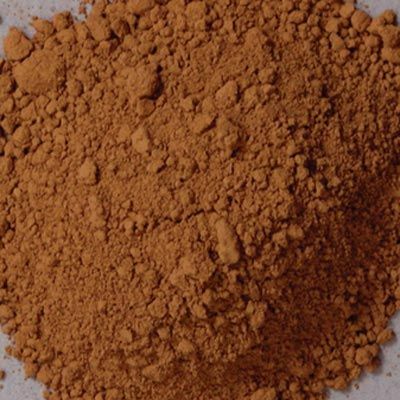
Rublev Colours Pigment: Italian Brown Ocher
| Pigment Information | |
| Color: | Brown |
| Colour Index: | Pigment Brown 7 (77491) (77492) (77499) |
| Chemical Name: | Iron Oxide Hydrated (partial component) |
| Chemical Name: | α-FeOOH |
| ASTM Lightfastness Rating | |
| Acrylic: | I |
| Oil: | I |
| Watercolor: | I |
| Properties | |
| Density: | 3.3–4.3 |
| Hardness: | 5.0–5.5 |
| Refractive Index: | nα=2.260 nβ=2.393 nγ=2.398 |
Italian Brown Ocher Oil Paint


Italian Brown Ocher Oil Paint
| Italian Raw Sienna | |
| Color: | Brown |
| Binder: | Linseed oil |
| Additive(s): | None |
| Pigment Information | |
| Pigment: | Brown Ocher |
| Pigment Classification: | Natural inorganic |
| Colour Index: | Pigment Brown 7 (77491) (77492) (77499) |
| Chemical Name: | Iron oxide hydroxide |
| Chemical Formula: | α-FeOOH |
| CAS No. | |
| Properties | |
| Code: | 622 |
| Series: | 1 |
| Opacity: | Semi-Transparent |
| Tinting Strength: | Good |
| Drying Rate: | Medium |
| ASTM Lightfastness: | I |
| Permanence: | A |
| Safety Information: | No acute or known chronic health hazards are associated with this product's anticipated use (most chemicals are not thoroughly tested for chronic toxicity). Protect yourself against potentially unknown chronic hazards of this and other chemical products by keeping them out of your body. Do this by avoiding ingestion, excessive skin contact, inhaling spraying mists, sanding dust, and vapors from heating. Conforms to ASTM D-4236 |
For a detailed explanation of the terms in the table above, please visit Composition and Permanence.
Color Notes: Raw Umbers Part Three
Pigments In Part Three
Cyprus Raw Umber Medium Pigment
| Pigment Names | |||
| Common Names: | English: umber French: terre d'ombre German: Umbererde Italian: terra d'ombra Russian: умбра Spanish: tierra de sombra |
||
| Alternate Names: | English: raw umber French: ombre naturelle |
||
| Nomenclature: |
|
||
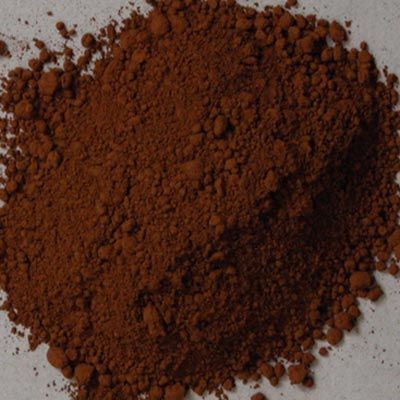
Rublev Colours Pigment: Cyprus Raw Umber Medium
| Pigment Information | |
| Color: | Brown |
| Colour Index: | Pigment Brown 7 (77491) (77492) (77499) |
| Chemical Name: | Iron oxide-hydroxide and manganese oxide |
| Chemical Name: | α-FeOOH·MnO2 |
| ASTM Lightfastness Rating | |
| Acrylic: | I |
| Oil: | I |
| Watercolor: | I |
| Properties | |
| Density: | 3.3–4.3 |
| Hardness: | 5.0–5.5 |
| Refractive Index: | nα=2.260 nβ=2.393 nγ=2.398 |


Cyprus Raw Umber Medium Oil Paint
| Cyprus Raw Umber Medium | |
| Color: | Brown |
| Binder: | Linseed oil |
| Additive(s): | None |
| Pigment Information | |
| Pigment: | Raw Umber |
| Pigment Classification: | Natural inorganic |
| Colour Index: | Pigment Brown 7 (77491) (77492) (77499) |
| Chemical Name: | Iron-manganese oxide |
| Chemical Formula: | Fe2O3·MnO2 |
| CAS No. | |
| Properties | |
| Code: | 614 |
| Series: | 1 |
| Opacity: | Semi-Transparent |
| Tinting Strength: | Medium |
| Drying Rate: | Fast |
| ASTM Lightfastness: | I |
| Permanence: | A |
| Safety Information: | No acute or known chronic health hazards are associated with this product's anticipated use (most chemicals are not thoroughly tested for chronic toxicity). Protect yourself against potentially unknown chronic hazards of this and other chemical products by keeping them out of your body. Do this by avoiding ingestion, excessive skin contact, and inhaling spraying mists, sanding dust, and vapors from heating. Conforms to ASTM D-4236 |
For a detailed explanation of the terms in the table above, please visit Composition and Permanence.
Cyprus Raw Umber Dark Pigment
| Pigment Names | |||
| Common Names: | English: umber French: terre d'ombre German: Umbererde Italian: terra d'ombra Russian: умбра Spanish: tierra de sombra |
||
| Alternate Names: | English: raw umber French: ombre naturelle |
||
| Nomenclature: |
|
||

Rublev Colours Pigment: Cyprus Raw Umber Dark
| Pigment Information | |
| Color: | Brown |
| Colour Index: | Pigment Brown 7 (77491) (77492) (77499) |
| Chemical Name: | Iron oxide-hydroxide and manganese oxide |
| Chemical Name: | α-FeOOH·MnO2 |
| ASTM Lightfastness Rating | |
| Acrylic: | I |
| Oil: | I |
| Watercolor: | I |
| Properties | |
| Density: | 3.3–4.3 |
| Hardness: | 5.0–5.5 |
| Refractive Index: | nα=2.260 nβ=2.393 nγ=2.398 |


Cyprus Raw Umber Dark Oil Paint
| Cyprus Raw Umber Dark | |
| Color: | Brown |
| Binder: | Linseed oil |
| Additive(s): | None |
| Pigment Information | |
| Pigment: | Raw Umber |
| Pigment Classification: | Natural inorganic |
| Colour Index: | Pigment Brown 7 (77491) (77492) (77499) |
| Chemical Name: | Iron-manganese oxide |
| Chemical Formula: | Fe2O3·MnO2 |
| CAS No. | |
| Properties | |
| Code: | 615 |
| Series: | 1 |
| Opacity: | Semi-Transparent |
| Tinting Strength: | Medium |
| Drying Rate: | Fast |
| ASTM Lightfastness: | I |
| Permanence: | A |
| Safety Information: | No acute or known chronic health hazards are associated with this product’s anticipated use (most chemicals are not thoroughly tested for chronic toxicity). Protect yourself against potentially unknown chronic hazards of this and other chemical products by keeping them out of your body. Do this by avoiding ingestion, excessive skin contact, and inhaling spraying mists, sanding dust, and vapors from heating. Conforms to ASTM D-4236 |
For a detailed explanation of the terms in the table above, please visit Composition and Permanence.
Color Notes: Burnt Umber
Pigments In Burnt Umber Color Notes
Cyprus Burnt Umber Pigment
| Pigment Names | |||
| Common Names: | English: burnt umber French: terre d'ombre brûlée German: Gebrannte Umbererde Italian: terra d'ombra bruciata Spanish: tierra de sombra tostada |
||
| Alternate Names: | English: calcined umber French: ombre calcinée |
||
| Nomenclature: |
|
||
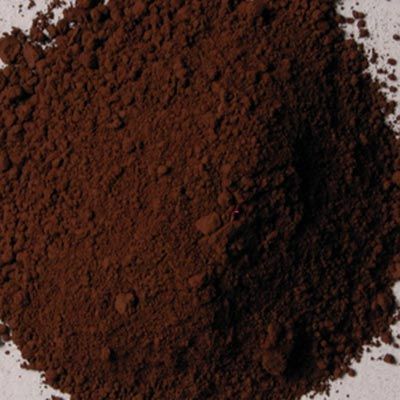
Rublev Colours Pigment: Cyprus Burnt Umber
| Pigment Information | |
| Color: | Brown |
| Color Index: | Pigment Brown 7 (77491) (77492) (77499) |
| Chemical Name: | Iron-manganese oxide |
| Chemical Name: | Fe2O3·MnO2 |
| ASTM Lightfastness Rating | |
| Acrylic: | I |
| Oil: | I |
| Watercolor: | I |
| Properties | |
| Density: | 3.3–4.3 |
| Hardness: | 5.0–5.5 |
| Refractive Index: | na=2.260 nß=2.393 ny=2.398 |


Cyprus Burnt Umber Oil Paint
| Cyprus Burnt Umber | |
| Color: | Brown |
| Binder: | Linseed oil |
| Additive(s): | None |
| Pigment Information: | |
| Pigment: | Burnt Umber |
| Pigment Classification: | Natural inorganic |
| Colour Index: | Pigment Brown 7 (77491) (77492) (77499) |
| Chemical Name: | Iron-manganese oxide |
| Chemical Formula: | Fe2O3·MnO2 |
| CAS No. | |
| Properties: | |
| Code: | 616 |
| Series: | 2 |
| Opacity: | Semi-Transparent |
| Tinting Strength: | Medium |
| Drying Rate: | Fast |
| ASTM Lightfastness: | I |
| Permanence: | A |
| Safety Information: | No acute or known chronic health hazards are associated with this product's anticipated use (most chemicals are not thoroughly tested for chronic toxicity). Protect yourself against potentially unknown chronic hazards of this and other chemical products by keeping them out of your body. Do this by avoiding ingestion, excessive skin contact, and inhaling spraying mists, sanding dust, and vapors from heating. Conforms to ASTM D-4236 |
For a detailed explanation of the terms in the table above, please visit Composition and Permanence.
Cyprus Burnt Umber Warm Pigment
| Pigment Names | |||
| Common Names: | English: burnt umber French: terre d'ombre brûlée German: Gebrannte Umbererde Italian: terra d'ombra bruciata Spanish: tierra de sombra tostada |
||
| Alternate Names: | English: calcined umber French: ombre calcinée |
||
| Nomenclature: |
|
||

Rublev Colours Pigment: Cyprus Burnt Umber Warm
| Pigment Information | |
| Color: | Brown |
| Color Index: | Pigment Brown 7 (77491) (77492) (77499) |
| Chemical Name: | Iron-manganese oxide |
| Chemical Name: | Fe2O3·MnO2 |
| ASTM Lightfastness Rating | |
| Acrylic: | I |
| Oil: | I |
| Watercolor: | I |
| Properties | |
| Density: | 3.3–4.3 |
| Hardness: | 5.0–5.5 |
| Refractive Index: | na=2.260 nß=2.393 ny=2.398 |


Cyprus Burnt Umber Warm Oil Paint
| Cyprus Burnt Umber Warm | |
| Color: | Brown |
| Binder: | Linseed oil |
| Additive(s): | None |
| Pigment Information | |
| Pigment: | Burnt Umber |
| Pigment Classification: | Natural inorganic |
| Colour Index: | Pigment Brown 7 (77491) (77492) (77499) |
| Chemical Name: | Iron-manganese oxide |
| Chemical Formula: | Fe2O3·MnO2 |
| CAS No. | |
| Properties | |
| Code: | 617 |
| Series: | 2 |
| Opacity: | Semi-Transparent |
| Tinting Strength: | Medium |
| Drying Rate: | Fast |
| ASTM Lightfastness: | I |
| Permanence: | A |
| Safety Information: | No acute or known chronic health hazards are associated with this product's anticipated use (most chemicals are not thoroughly tested for chronic toxicity). Protect yourself against potentially unknown chronic hazards of this and other chemical products by keeping them out of your body. Do this by avoiding ingestion, excessive skin contact, and inhaling spraying mists, sanding dust, and vapors from heating. Conforms to ASTM D-4236 |
For a detailed explanation of the terms in the table above, please visit Composition and Permanence.
Luberon Burnt Umber Pigment
| Pigment Names | |||
| Common Names: | English: burnt umber French: terre d'ombre brûlée German: Gebrannte Umbererde Italian: terra d'ombra bruciata Russian: умбра жженая Spanish: tierra de sombra tostada |
||
| Alternate Names: | English: calcined umber French: ombre calcinée |
||
| Nomenclature: |
|
||

Rublev Colours Pigment: Luberon Burnt Umber
| Pigment Information | |
| Color: | Brown |
| Colour Index: | Pigment Brown 7 (77491) (77492) (77499) |
| Chemical Name: | Iron-manganese oxide |
| Chemical Name: | Fe2O3·MnO2 |
| ASTM Lightfastness Rating | |
| Acrylic: | I |
| Oil: | I |
| Watercolor: | I |
| Properties | |
| Density: | 3.3–4.3 |
| Hardness: | 5.0–5.5 |
| Refractive Index: | nα=2.260 nβ=2.393 nγ=2.398 |


French Burnt Umber Oil Paint
| Cyprus Raw Umber Medium | |
| Color: | Brown |
| Binder: | Linseed oil |
| Additive(s): | None |
| Pigment Information | |
| Pigment: | Raw Umber |
| Pigment Classification: | Natural inorganic |
| Colour Index: | Pigment Brown 7 (77491) (77492) (77499) |
| Chemical Name: | Iron-manganese oxide |
| Chemical Formula: | Fe2O3·MnO2 |
| CAS No. | |
| Properties | |
| Code: | 609 |
| Series: | 1 |
| Opacity: | Semi-Transparent |
| Tinting Strength: | Medium |
| Drying Rate: | Fast |
| ASTM Lightfastness: | I |
| Permanence: | A |
| Safety Information: | No acute or known chronic health hazards are associated with this product's anticipated use (most chemicals are not thoroughly tested for chronic toxicity). Protect yourself against potentially unknown chronic hazards of this and other chemical products by keeping them out of your body. Do this by avoiding ingestion, excessive skin contact, and inhaling spraying mists, sanding dust, and vapors from heating. Conforms to ASTM D-4236 |
For a detailed explanation of the terms in the table above, please visit Composition and Permanence.
More Frequently Asked Questions
What two colors make umber?
While natural umber is a distinct pigment derived from earth minerals, a close approximation in color mixing can be achieved by blending dark brown with a touch of green. This mix, however, will not perfectly replicate the unique properties and texture of natural umber pigment.
What is a synonym for umber?
Common synonyms for umber include 'raw umber' when referring to its natural state and 'burnt umber' for its heated variant. Historically, it was sometimes referred to as 'terra d’ombra' or 'brown earth.'
What is a good color substitute for raw umber?
A mix of burnt sienna with a bit of black or blue can serve as a substitute for raw umber, offering a similar depth of color, although the exact hue and texture may differ.
Can I use raw umber instead of burnt umber?
Yes, you can use raw umber instead of burnt umber, but expect a difference in color and tone. Raw umber is cooler and more muted, while burnt umber has a warmer, reddish tone due to the heating process it undergoes.
What is the opposite of Burnt Umber on the color wheel?
The opposite of burnt umber on the color wheel is typically a cool blue or blue-green. This contrast is because burnt umber is a warm, dark reddish-brown, so its complementary color is on the cooler spectrum.
What is the difference between Burnt Umber and umber?
The primary difference lies in their processing and resultant color. Raw umber is the natural, unprocessed pigment, typically a greenish-brown. Burnt umber, on the other hand, is raw umber that has been heated, transforming it into a deeper, reddish-brown color with a different tone and properties.
Where is umber found?
Umber is found in various locations worldwide, with significant deposits in Cyprus, Italy, and regions of France. Historically, it was also sourced from England, Germany, and the United States. The specific geological conditions in these areas lend to the unique composition and color of umber extracted from each region.
What is the opposite of Burnt Umber?
On the color wheel, the opposite of burnt umber, a warm reddish-brown, is typically a cool blue or blue-green. This complementary color contrast is due to burnt umber's warm tones.











